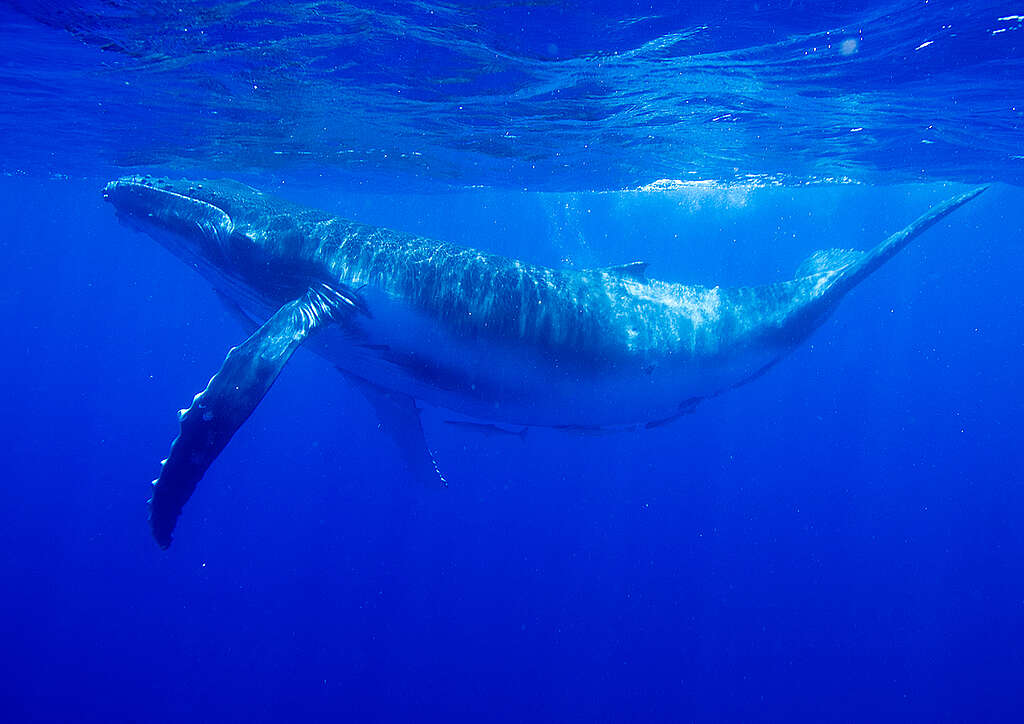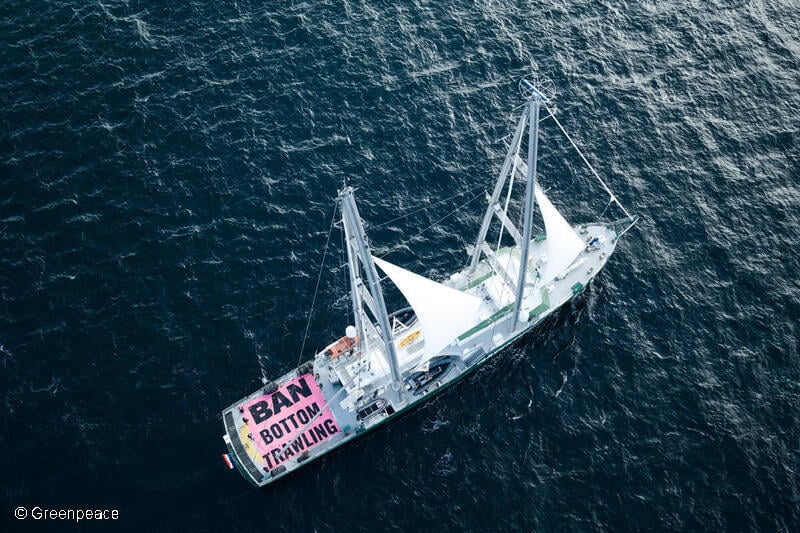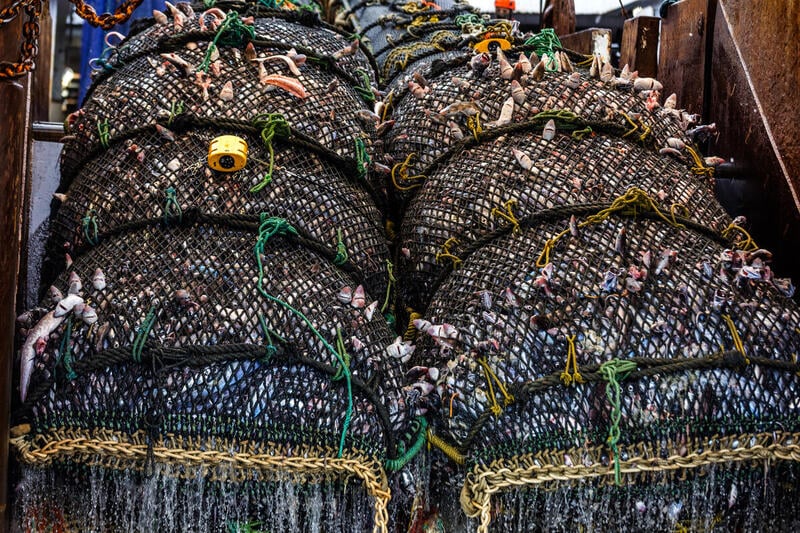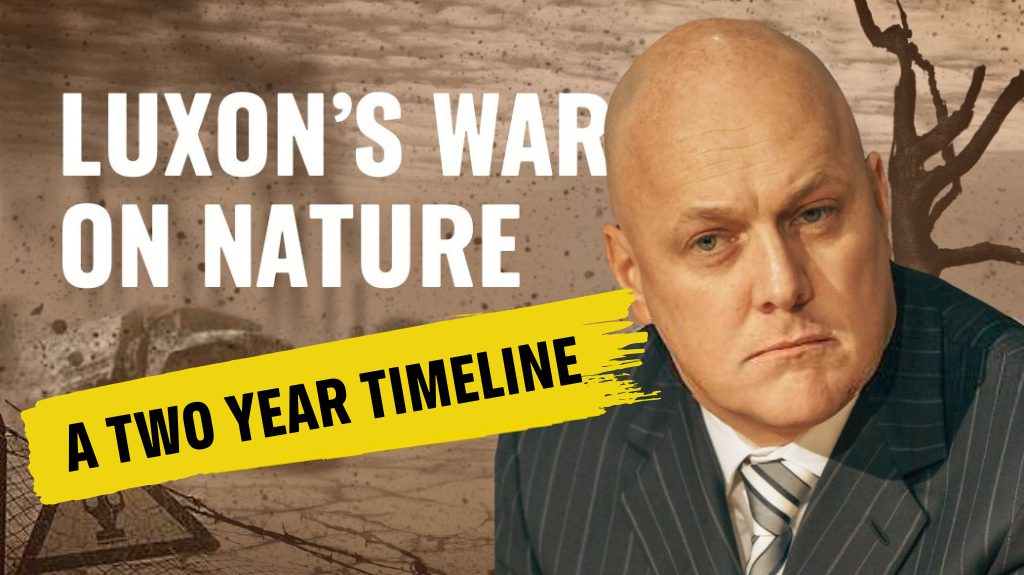TASMAN SEA – A new analysis of the latest fisheries data by Greenpeace Australia Pacific has revealed widespread slaughter of sharks in the Pacific Ocean by industrial longline fishers. The analysis estimates that almost half a million blue sharks were caught as bycatch in the region in 2023, the highest number in recorded history since 1991.
Greenpeace estimates that around 438,500 near-threatened blue sharks, almost 50 million kilograms, were caught as bycatch in the region in 2023 from Western and Central Pacific Fisheries Commission (WFCPFC) data. The figure is double the 2015 numbers.
The analysis of shark bycatch data also revealed that the Lord Howe Rise and South Tasman Sea areas between New Zealand and Australia had some of the highest rates of birds caught on fishing lines – 13% of bycatch from longliners were seabirds like albatross.
Greenpeace Aotearoa oceans campaigner Juan Parada says, “This rampant destruction of critical ocean life in the high seas between New Zealand and Australia highlights the urgent need for international cooperation to protect the oceans.”
“The Tasman Sea faces multiple threats from industrial fishing. We’ve recently seen firsthand the destruction caused by bottom trawlers in a similar area of the high seas, where we witnessed graveyards of destroyed coral. Now we see that almost half a million blue sharks were unnecessarily killed in the West and Central Pacific in 2023. That’s so many sharks that if stacked nose to tail, they would reach the International Space Station and back.
“The international waters between New Zealand and Australia are globally renowned precisely because of the range and variety of ocean life that lives there, from deep sea corals growing on seamounts to sharks, seabirds and migrating whales.
“It’s such a significant place that Greenpeace and allies are calling for it to be one of the world’s first global ocean sanctuaries and it must be protected from longlining and bottom trawling so ocean life can thrive,” says Parada.
In October last year a New Zealand bottom trawler, the Tasman Viking, pulled up several types of deep-sea coral while trawling in international waters of the Tasman Sea.
The incident happened on Lord Howe Rise, a region renowned for diverse marine life including corals, sponges, whales and seabirds.
Parada says, “While some countries are working constructively towards protecting the high seas, New Zealand is actively blocking meaningful ocean protection. Shockingly New Zealand is the only country still bottom trawling these waters.
“To protect the Tasman Sea, New Zealand must stop bottom trawling and get on with helping to create global ocean sanctuaries so all the life that lives there can thrive.”
Scientists agree that to help stave off the worst of the climate crisis at least 30% of the world’s oceans must be protected from industrial harm by 2030.
Creating global ocean sanctuaries in international waters like the Tasman Sea, those areas outside of any one country’s jurisdiction, will play a crucial role in achieving this goal. In 2023 the world won the Global Ocean Treaty, which provides the legal framework for these sanctuaries, but first it must be passed into law.
Parada says, “Now is the time for cooperation in ocean protection. Every day that passes without the Global Oceans Treaty in force, marine species are being pushed closer to the brink of extinction by the industrial fishing fleet in the high seas.”
Greenpeace Australia Pacific spokesperson Georgia Whitaker says of the shark bycatch data, “The data is deeply disturbing – it’s a devastating record and a testament to the destructive nature of the industrial fishing industry. Sharks and other animals dying by the hundreds of thousands a year in this one patch of ocean, brutally killed by a legal and indiscriminate fishing practice like longlining. This is an appalling legacy our global leaders are leaving while the blue lungs of our planet are already facing chronic decline. Industrial fishing is sucking our ocean dry, fuelling the biodiversity crisis, and pushing prehistoric animals like sharks to the brink of extinction. Healthy shark populations are central to a healthy ocean – this is a loss we can’t afford.”
Ahead of the United Nations Oceans Conference in Nice, France, in June, Greenpeace is calling on governments to ratify the Global Ocean Treaty. Both New Zealand and Australia have signed the treaty but have yet to bring it into force.
Notes:
A recent report by the International Union for Conservation of Nature (IUNC) revealed that one-third of sharks worldwide are endangered, and two-thirds of those endangered are at risk of extinction from overfishing. Blue Sharks are listed as Near Threatened and Largely Depleted by the IUCN.
The blue shark is by far the most common bycatch in the region and the world, making up 80-90% of all shark catches across the WCPFC in the last nine years. Between Australia and New Zealand in the Tasman Sea region, blue sharks made up more than 90% of the shark bycatch from longline fishers.

Call on the Foreign Affairs Minister Winston Peters to create new global ocean sanctuaries and protect our blue planet.
Sign the petition


